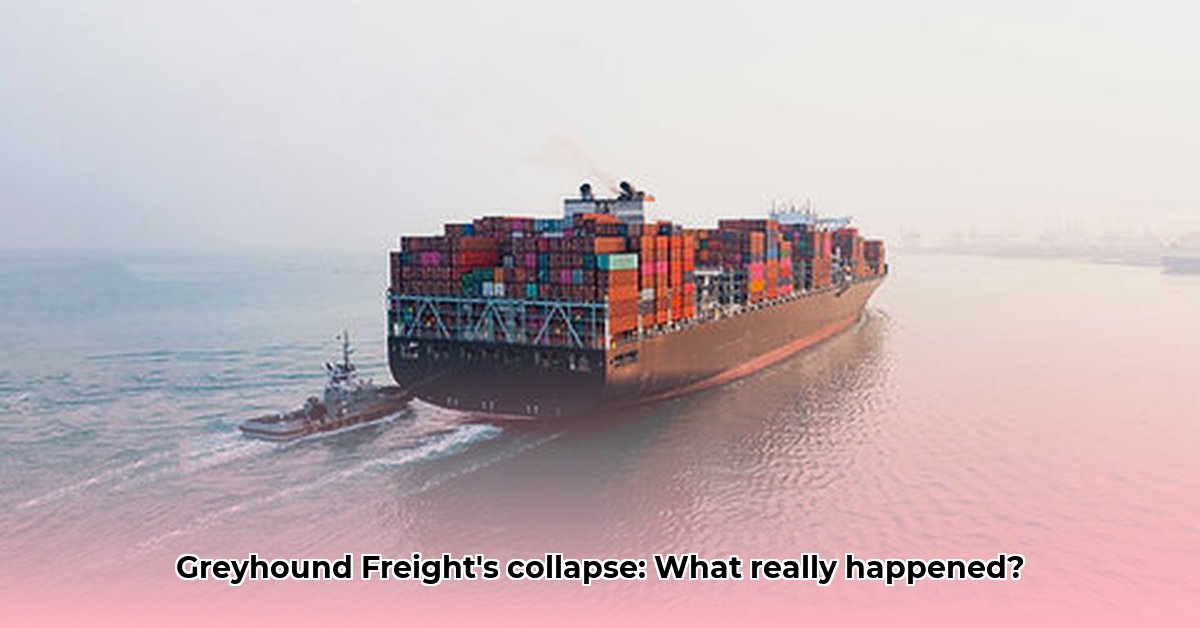
Greyhound Package Express (GPX) represented a bold attempt to leverage an existing infrastructure – Greyhound's extensive bus network – into a competitive package delivery service. While the initial premise of undercutting established giants like FedEx and UPS through lower pricing was appealing, GPX ultimately failed. This post-mortem analysis explores the factors contributing to its demise, examining its strengths, weaknesses, and the critical lessons learned.
The Allure of Lower Costs: GPX's Initial Strengths
GPX initially possessed a significant advantage: price competitiveness. For budget-conscious businesses, the lower costs compared to major players were a strong draw. Furthermore, Greyhound's vast network, encompassing over 3,800 destinations nationwide, offered unparalleled coverage. The company also attempted to cater to diverse needs by offering varying service levels, including standard, expedited, and bulk options. On paper, the strategy appeared sound. But did this translate to market success? The answer, unfortunately, is no.
The Road to Failure: GPX's Critical Weaknesses
Several significant obstacles hampered GPX's growth and ultimately led to its failure. The most prominent issue was the severe limitations imposed by its inherent infrastructure. Since packages were transported beneath buses, strict size and weight restrictions (a maximum of 100 pounds with limited dimensions) significantly restricted the types of shipments GPX could handle. This effectively excluded a large segment of potential customers.
Compounding this issue was the lack of speed. Even for relatively short distances (under 125 miles), delivery times frequently extended to two days. In a market increasingly reliant on next-day or even same-day delivery, this considerable delay proved to be an insurmountable disadvantage. This slow delivery significantly impacted customer satisfaction and competitive positioning.
Finally, GPX's market share remained disappointingly low. While transporting 2.2 million packages annually might seem substantial, it paled in comparison to the volumes handled by established competitors. This inability to gain significant market traction, despite its lower prices, proved fatal. Insufficient revenue generation, despite the potential for a niche market, ultimately led to the service's collapse.
A SWOT Perspective: Deconstructing GPX's Trajectory
A SWOT analysis provides a clearer understanding of GPX's strengths, weaknesses, opportunities, and threats:
| Strength | Weakness | Opportunity | Threat |
|---|---|---|---|
| Competitive pricing | Severe size and weight restrictions | Specialization in oversized cargo delivery | Intense competition from established giants (FedEx, UPS) |
| Extensive nationwide network coverage | Slow delivery times; lack of speed competitiveness | Technological upgrades (tracking, routing optimization) | Fluctuating fuel costs; impacting operational efficiency |
| Diverse service options | Low market share; inability to scale effectively | Strategic partnerships for last-mile delivery | Economic downturns affecting shipping demand |
Lessons Learned and Future Implications
The failure of GPX underscores several crucial lessons. Firstly, competitive pricing alone is insufficient; speed, reliability, and service flexibility are paramount in today's demanding shipping landscape. Secondly, significant infrastructure limitations, such as those imposed by GPX's size and weight restrictions, can severely restrict market penetration. Finally, a realistic market analysis and a robust plan to overcome logistical challenges are crucial for success. Even an innovative concept can falter without flawless execution.
For businesses considering similar ventures, diversification of shipping options is crucial. Reliance on a single, potentially limited, mode of transport exposes businesses to vulnerabilities. Exploring niche markets or strategic alliances to improve speed and delivery efficiency could provide a more sustainable path to success.
Key Takeaways from the GPX Failure:
- Competitive pricing is not enough: Speed and reliability are equally crucial.
- Infrastructure limitations restrict growth: Thoroughly assess the capabilities and limitations of any infrastructure-based business strategy.
- Market share is paramount: A niche market is not always sufficient for long-term viability.
This analysis of Greyhound Package Express's failure offers valuable insights into the complexities of the shipping industry and highlights the critical importance of comprehensive market analysis and strategic execution for achieving sustainable success. The case of GPX serves as a cautionary tale, emphasizing the need for a holistic approach that considers all operational aspects, not just cost.